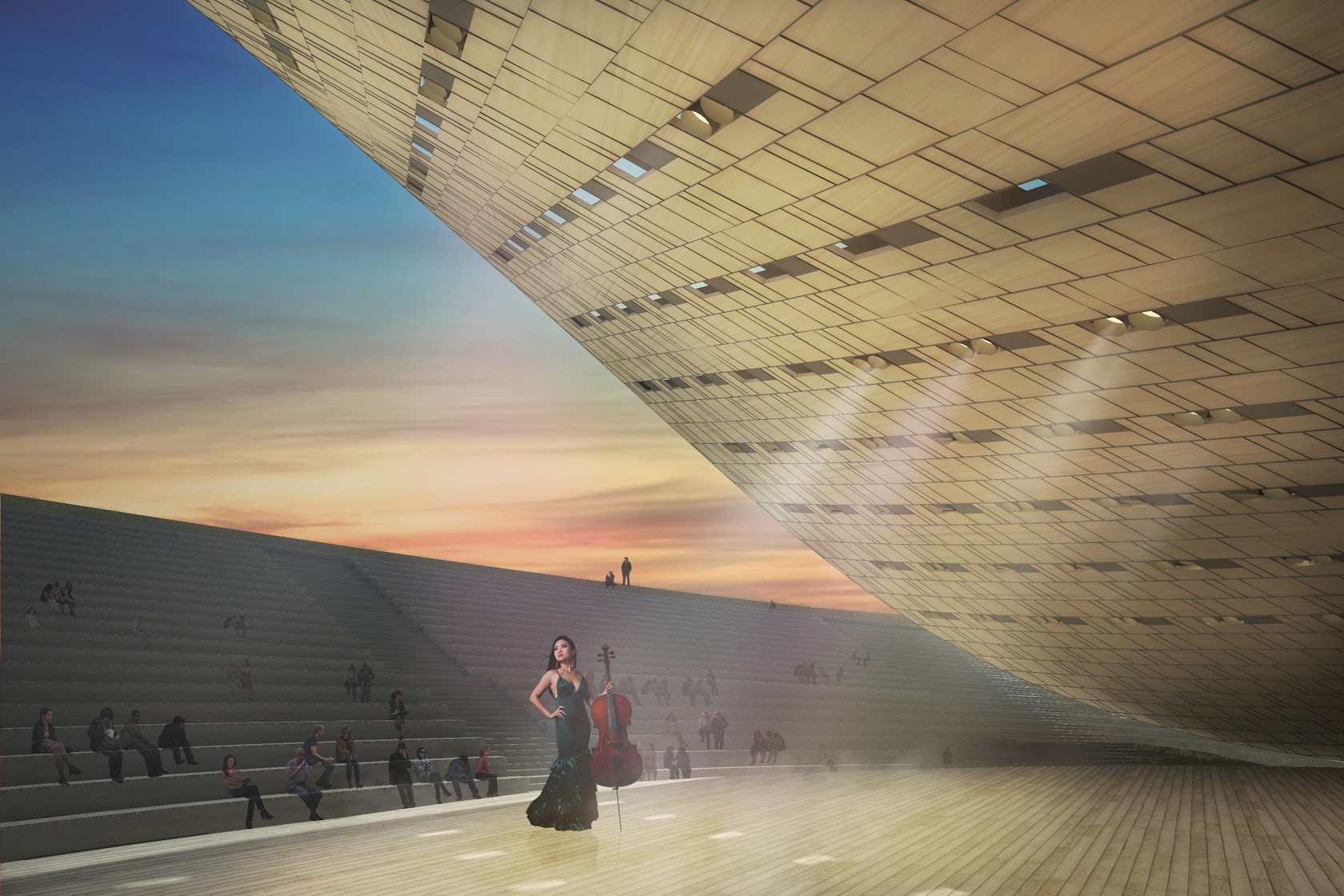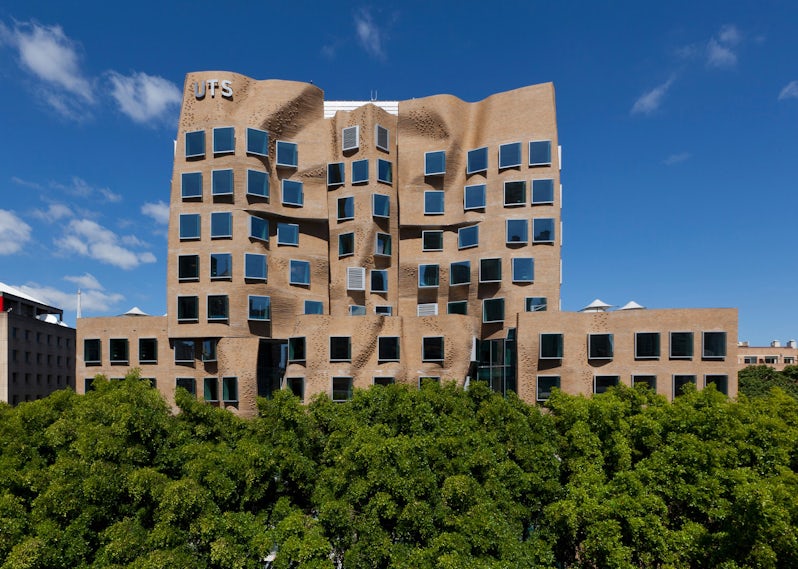Architizer continues to explore how architects experience the emotional realm during the process of creation, presenting the points of view of some of the profession’s most actualized practitioners. Today, Saxon Henry, author of Four Florida Moderns, interviews Kimberly Brown, AIA, LEED, AP — Co-founder and Principal of Strata Architects, PLLC — who speaks of the poetics of space and the phenomenology of place.
I have emotional responses when I experience architecture and I’m curious to know if you are aware of having emotional responses when creating it.
The beginning of a project brings up emotions of excitement for the unlimited possibilities that could exist and a strong motivation for achieving a novel, new, unique, cutting-edge design. Then during the design process, the realities of the budget and value engineering come into focus, and emotions of desire and passion for maintaining the dynamic core of the design come into play. This is when creative problem-solving skills are critical so that when editing the project’s details and use of materials, the building’s essence survives.

© STRATA ARCHITECTS PLLC

© STRATA ARCHITECTS PLLC
Community Amphitheater, Strata Architects
Do you have a normal emotional starting point once you know you are going to take on a project?
The starting point of a project begins with understanding the client’s vision, the parameters of the space physically and symbolically, as well as what it will mean to the end users. The goal of a recent project — an amphitheater for a newly consolidated public high school — was to raise students’ pride in their alma mater with a physical space that was collaboratively supported by school alumni, high school students and the surrounding community. The structure, partially funded by an NFL MVP who graduated from the school, was seen as a beacon of possibility for the future success of all students — this vision of leadership an exciting focus for the architectural planning.
A current theater project houses a musically talented religious group and is a venue for community musicals. The acoustics of the space and the choice of materials used were key to ensuring that a legacy of creativity will be fostered each time the group performances unfold on the stage.
Do you remember from architecture school if the emotionality of what you were reading and/or studying took you to a new plane of thinking or feeling in any way?
The Poetics of Space by Gaston Bachelard made a significant impact on me. The idea of time, the weathering of materials, the daily movement of the sun across the sky, the changes that happen seasonally due to the rotation of the earth around the sun, as well as the weather patterns that affect the different qualities of light — each of these inform architecture.
The personal feelings that occur from repetition of daily life, such as the simple act of opening a door compounded with the awakening feeling of a breeze across your bare arm or a beam of sunlight on your face serve to awaken you from the repetitive motion and place you in the present. I believe in this way architecture can enhance the experiential and can be a canvas for daily life. A successful building affords an opportunity for powerful nuances of feeling, such as the sense of time or the appreciation of light. An architect’s awareness of the phenomenology of a place and how a person-built structure can imbue each space with the experience of each user’s life is poetics at its core.

© STRATA ARCHITECTS PLLC

© STRATA ARCHITECTS PLLC
Baku Matbuat Center by Strata Architects
Do you know when you’ve “got it,” meaning you know emotionally when you have the best design for a building you can possibly create at any given time?
A design can always improve. That said, there is definitely an emotional feeling when a project’s form, design, technology, sustainability and spatial sequencing proves it’s embodying the vision set out by the client. Once clients feel their needs have been heard and met, this vision is strengthened. Our firm sees the role of our work as being equivalent to a layering of the human strata — the different voices on the project — coming together in harmonious wholeness.
Do you feel that as an architect matures, different emotions come into play or do you feel temperament is a set piece of the personality?
Attunement and receptivity to the collaborative process evolves with experience. The autonomy that an architect often seeks in the early years, when he or she is trying to prove his or her point of view, drips away and the realization of how different perspectives enhance the final project replace the quest for self-appeasement.
Do you do active charrettes in your studios with your teams and, if so, how does emotionality come into play during that process?
The role of charrettes is often explored in our studio to energize the team during the conceptual design phases. One favorite method for a charrette is to assign each person a specific area of a project or master plan, and to have the work passed on to another team member every four hours. This allows several sets of eyes to see a building and people with different paradigms to work on individual parts of it, making the project richer and more complex. This is an important exercise as the form is edited and clarified.

© STRATA ARCHITECTS PLLC

© STRATA ARCHITECTS PLLC
Public Park Pavilion by Strata Architects
Do you experience different emotions when you are walking through your built projects that surprise you in any way and can you give me an example?
With today’s process of design and coordination using BIM modeling, an architectural team virtually walks through the space numerous times prior to walking through the jobsite or the completed project in real time. On the best projects, the collaborative efforts that arise create a sense of openness in the design-intent between the architect and the contractors from the beginning. For me, the most powerful moments onsite evolve when a subcontractor takes on a level of pride in their craftspersonship stemming from a material exceeding the original design intent. These unique experiences are a direct result of an interdisciplinary resolution.
Do you find any one type of project more emotionally challenging than any other?
Designing in the public realm is one of the most rewarding because it is, essentially, creating a backdrop for the public life of a city. But this type of project resides within the most challenging realm of reviews and critics because public projects must take into account the opinions of numerous city agencies and concerns of local constituents. The true rewards come when there is a public figure that serves as a stakeholder in the project and sees it as an extension of their responsibility to their constituents. This role model or group sees public space as a benefit to the community and they fight to make sure that the material choices will endure time and that the money spent is emblematic of the many generations who will enjoy the space. When it all comes together in the best possible way, it is remarkably rewarding.



